Pantex Blog
Wild Pantex - Swainson’s hawks, narrow corridors and wind farms
Article by Jim Ray, Pantex Wildlife Biologist/Scientist
The four remaining satellite‑marked Swainson’s Hawks departed from their nesting territories and are well on their way south towards their wintering grounds in Argentina. The hawks are strung out in migration, with one each in Nicaragua, El Salvador, Guatemala, and Mexico.
Attrition has occurred due to mortality and exhausted battery lives. A number of them have been retrieved and will be refurbished for use next summer. West Texas A&M University, the USGS Cooperative Fish and Wildlife Research Unit at Texas Tech University and Pantex have data of activity related to wind farms gathered throughout the hawks’ annual life cycle, which includes in their nesting territories, along their migration pathways and in their winter territories in Argentina. This work serves as a major contribution to the U.S. Department of Energy/National Nuclear Security Administration’s accomplishments under Executive Order 13186, Responsibility of Federal Agencies to Protect Migratory Birds. Among other things, this executive order promotes research, partnerships and outreach.
Our data, when overlain with maps of wind farms in North, Central, and South America, has enabled us to develop risk models for this species. Combined, all of our marked birds migrate along a narrow path the whole distance between here and the wintering area in Argentina. Data from other regions, when combined with ours, suggest that the entire population of this species takes this same narrow corridor. Especially interesting is that this path includes traversing a narrow mountain pass in Central America. This also begs the question on how many other species and individual birds pass through this same pass. Wind farm proponents have also found this same pass to be suitable for development. Thus, risk models involving situations like this are of great conservation value.
We are now transitioning our work to see if fledgling/juvenile Swainson’s hawks take the same paths and use the same areas, and if windfarms pose more risks to the inexperienced youngsters. Juveniles do not nest and it is unknown how and where they spend the first two years of their lives.
We have other types of data based on before and after turbine installation, distances from turbines and habitat type. This applies to songbirds, bats, and of course, birds of prey. We even have productivity and prey delivery data from nests at various distances from turbines. Our data were useful when eagle survey data was requested by the U.S. Fish and Wildlife Service as part of our inquiry about the need for an Eagle Take Permit (accidental mortality of eagles at turbines).
These projects make up the latest of a long line of research projects on migratory birds that Pantex has worked on with universities, including those on western burrowing owls, purple martins and avian use of black‑tailed prairie dog colonies. These latest projects include monitoring associated with the Pantex Renewable Energy Project.
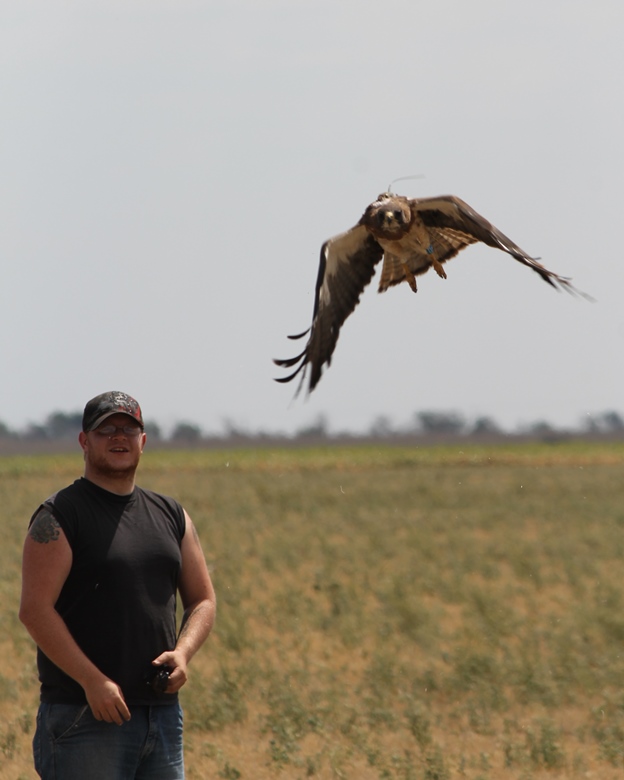
West Texas A&M University student Dustin Henderson releases a Swainson’s hawk that is sporting leg bands and a satellite transmitter. If you look closely, you can see the antenna coming off the bird’s back.
Building makeover at Pantex: three stations
Dating back more than seven decades, some of the Pantex buildings are in need of repairs. Recently, three stations received an overhaul as a Quality of Life initiative. Problems in these facilities included insulation, rusted doors and lights and non-functioning utilities.
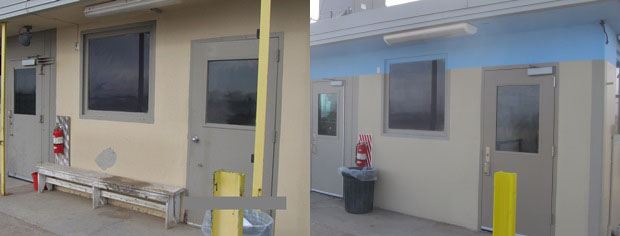
“They were simply worn out. They were freezing cold during the winter, full of dust in the spring, and hot and full of bugs in the summer,” said Debbie Weeks with Infrastructure Projects.
The renovation team overcame myriad challenges to complete the work on schedule, including changed site conditions, Panhandle weather, electrical outages, resource constraints and scheduled coordination. Success was only made possible through the commitment of the team, a high level of cooperation across departments and management support.
“The biggest challenges we faced involved the dilapidated state. Almost everything we removed or replaced revealed more problems that needed to be addressed. The team really worked together to figure out and implement the best solutions safely and efficiently,” said Weeks.
The planning phase for the project began in March of 2013. Building 1 was up first on the drawing board, and the contractor began field work in November. Despite a typical Panhandle winter, we finished before Valentine’s Day in 2014.
Building 2 followed suit, and work began in July of 2014, with completion in January 2015.
Building 3 presented some bigger challenges. An entire abandoned control bank and a trailer of wire were removed, and a functional millwork cabinet with streamlined console was installed. It received a coat of spray on insulation and was completed in July 2015.
Renovations at all three locations included new HVAC units, doors, window tint, epoxy flooring, dimmable LED lights, sidewalk lights, storage cabinets, traffic monitors, bird deterrents, pest deterrents and fixtures. Where needed, walls and ceilings were patched and painted, acoustical tiles were installed and exterior paint was applied.
“Now that the renovations are complete, many have commented especially on the comfort and functionality. The before and after pictures show the marked difference in the appearance,” added Weeks. “But to me, it went much deeper than that. Our entire team really took this project to heart and embraced the concept of improving the working conditions. It was very rewarding to us to help improve the quality of life,” said Weeks.
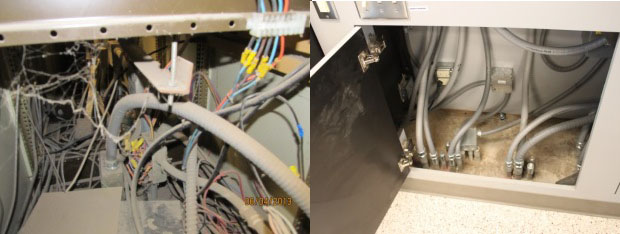
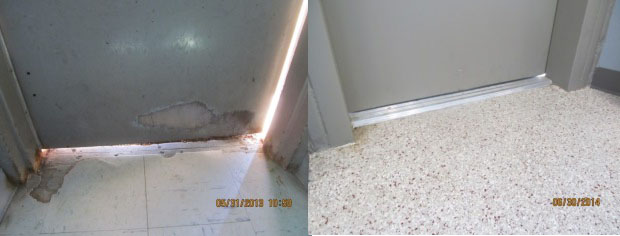
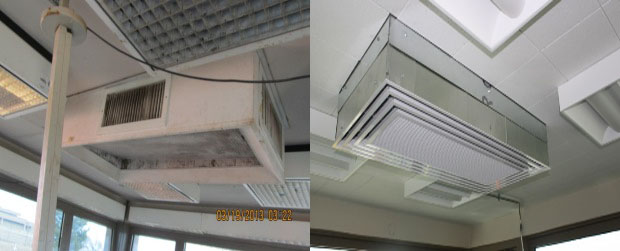
Integrating Safeguards, Security, & Emergency Services at CNS
Integrating organizations across two states (and two time zones) can be complex. The divisions within the Safeguards, Security, & Emergency Services organization have been working to integrate, standardize and consolidate their many processes at the Pantex Plant and Y‑12 National Security Complex and are making great progress.
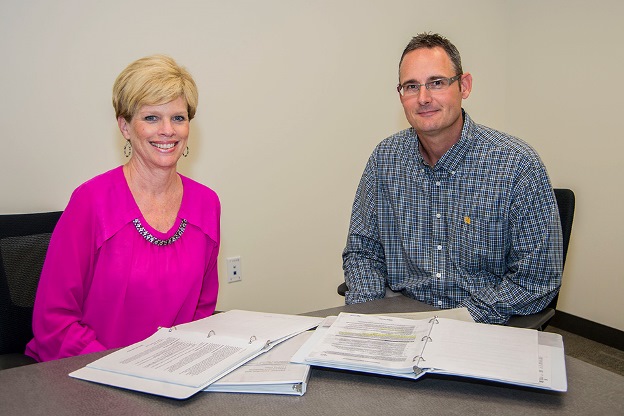
Linda Pyatt, Y-12 S&S Performance Assurance Issues Management, assists Gannon Tucker, the CNS SS&ES change control administrator based at Pantex, with consolidating security's document control.
The initial approach was to simply enable department‑level managers to integrate their processes with their counterparts. They were able to identify many ways to integrate, but it became difficult to fully execute those ideas. An Integration Management Team was created and charged with facilitating the divisions through this complex process. The team took on a systems approach and assisted each department manager with developing an integration plan for his or her group then guided and assisted them in surmounting obstacles as they worked through their plans.
Brian Deorocki of SS&ES Operations Management at Pantex explained, “Individual department managers focus on their areas and are not always able to see the big picture as it relates to all of the internal and external connections. The team, however, is able to see the system as a whole and is better able to integrate the moving pieces, so to speak.”
A steering committee oversees integration efforts and resolves issues that could not be resolved at the department level. The committee is comprised of the four direct reports to the SS&ES vice president. Ultimately, the S&S steering committee approves all integrating actions. The Integration Management Team works closely with various teams from Booz Allen Hamilton and is accountable to the steering committee to ensure no independent effort exists that will conflict with the CNS five absolutes.
These positive working relationships have enabled the development of integration plans and consistent processes. For example, the administration of random drug and alcohol testing can now take place at either site for visiting personnel. Also, the Annual Security Refresher Briefing had been a requirement for all personnel at Y-12 when the DOE order only required it for cleared personnel; that process is now standardized at both CNS sites and complies with the DOE order. Weekly security shares, used as security reminders during meetings, are now used jointly at both sites and can be accessed on the CNS intranet. In many cases, just the formalization and documentation of some long‑established informal processes naturally fit into the integration effort. The SS&ES integration strategy has been to work with each program separately and simultaneously.
Performance Assurance is leading the way toward integrating both security programs. This department provides internal services to divisions and easily transcends across those division lines, with standardized processes for assessments, issues management and performance testing. Performance assurance activities can also effectively identify gaps in other integration efforts warranting attention. To date, Performance Assurance is operating as one team to fully integrate the program across the enterprise.
SS&ES teams continue integrating the Pantex and Y-12 programs. A strong foundation cannot occur over night, but CNS security personnel are striving to see it completed soon.
Ken Freeman, SS&ES vice president, said, “The integration effort has been challenging, but we are very pleased with the work our employees are accomplishing. Through their continued collaborative and cooperative efforts, we anticipate having even greater success in FY 2016.”
Pantex supports March of Dimes
Pantex was a proud presenting sponsor of the recent March of Dimes Golf Tournament that took place Aug. 22. CNS contributed $8,000 to benefit the goal of healthy babies and mothers in the area. The annual golf tournament is a popular event among Pantexans. “Not only were we able to have a good time, we were able to support a great cause,” said Todd Ailes, Pantex deputy site manager.
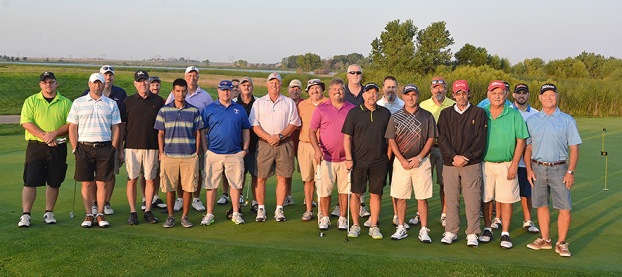
Kenny Steward, Pantex quality operations director, knows the significance of being able to give and how it drives Pantexans to participate in multiple events throughout the year. “As one of the largest employers in the Amarillo area, it is important for us to give back to our community and support many of our charities both local and national,” Steward said. “It was an honor to be one of the 60+ employees to represent CNS and the Pantex Plant at the March of Dimes Golf Tournament.” Steward added that being a part of the first‑place team for the third flight was a nice way to top off the event. Pantexans who participated signed a commemorative banner and received a complimentary golf towel courtesy of CNS.
| Notable team results with Pantex participants | ||
| 1st Flight | 2nd Flight | 3rd Flight |
| 2nd Place Mike Smith Corey Boyd Bob McWaters Rick Allford |
3rd Place Paul Diaz Sr. Paul Diaz Jr. Steven Diaz Cameron Diaz |
1st Place Joe Marshall Todd Ailes Bob Asbury Kenny Steward |
| 3rd Place Doug Cruz Curt Hinz Jerry Tenorio Frank George |
2nd Place Jimmy Ramirez Harry West Tim Alvarado Arnold Galbraith |
|
| 6th Place Danny Sena Pat Sena Roger Williams Gary Haynie |
5th Place Tyson Sherwood Detrik Sherwood Grant Singleton Brad Henston |
|
| Long Drive # 18 A.M. — David Vasquez | ||
SBA recognizes Pantex as a leader
The Pantex Plant’s Supply Chain Management organization recently received three awards from the Small Business Administration.
Pantex received the following awards:
- SBA leader in the Lubbock-West Texas District and the SBA Region VI (comprised of Texas, New Mexico, Oklahoma, Arkansas and Louisiana),
- Provider of outstanding stellar access to procurement opportunities for small businesses and
- SBA Procurement All Star.
The awards were presented by SBA Region VI District Director Calvin Davis and Regional Administrator Yolanda Garcia Olivarez.
Pantex has a long history of working with small business. Kelly Delgado-Goudschaal, acting manager of Supply Chain Management said, “These awards are a direct reflection of the dedication and the commitment of the Procurement personnel at Pantex. We have had a long-standing tradition of supporting small businesses within our community. We also work with the West Texas Procurement Center to develop and mentor small businesses within our community.”
Achieving the subcontracting goal is part of the plan. “We have an established goal each year as to the amount of dollars to be awarded to small businesses, and we work with a variety of organizations, such as those with expertise in special tooling, packaging and fuels,” according to Compliance team lead Barbara Smith. Consolidated Nuclear Security, LLC has a small business subcontracting goal of 65 percent for the plant.
Smith added, “It is an honor to be recognized by SBA as a leader for promoting small businesses. For the past seven years, we have consistently exceeded our small business goal. Pantexans continue to support SBA initiatives by identifying small businesses with which we can contract.”
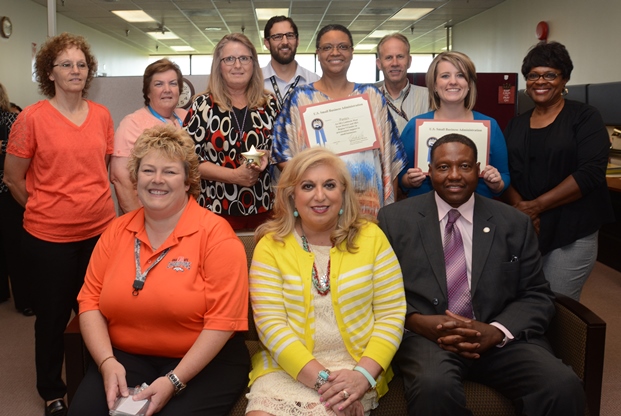
Small Business Administration Region VI SBA District Director Calvin Davis and Regional Administrator Yolanda Garcia Olivarez recently presented awards to Pantex’s Supply Chain Management organization. Featured in photo, front row, from left, Kelly Delgado-Goudschaal, Olivarez and Davis. Back row from left, Frances Tillery, Barbara Smith, Teresa Albus, Jeff Gillmore, Tammi Pedro, Randy Lucas, Ashley Hayton and Diane Johnson.
